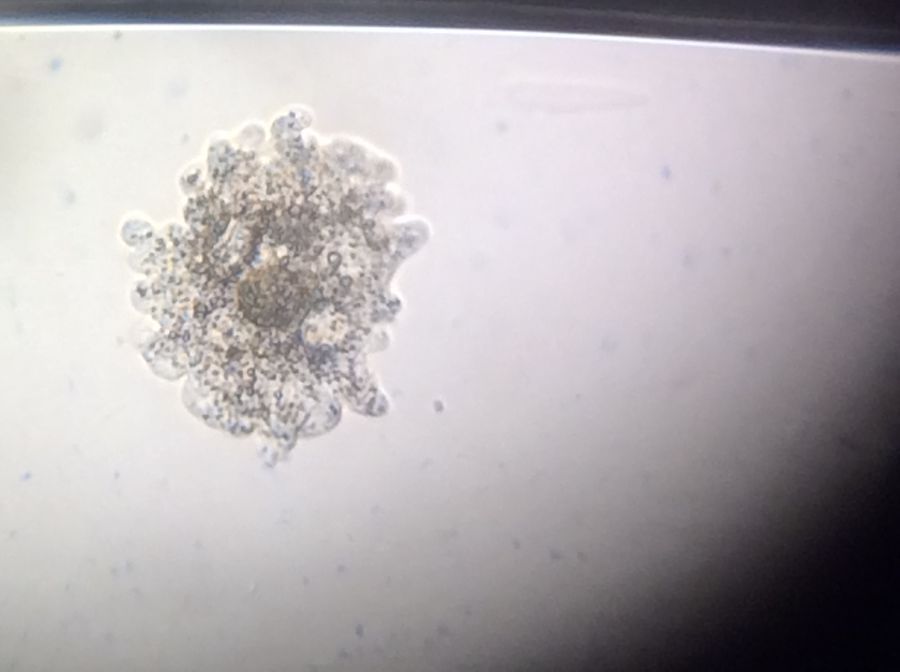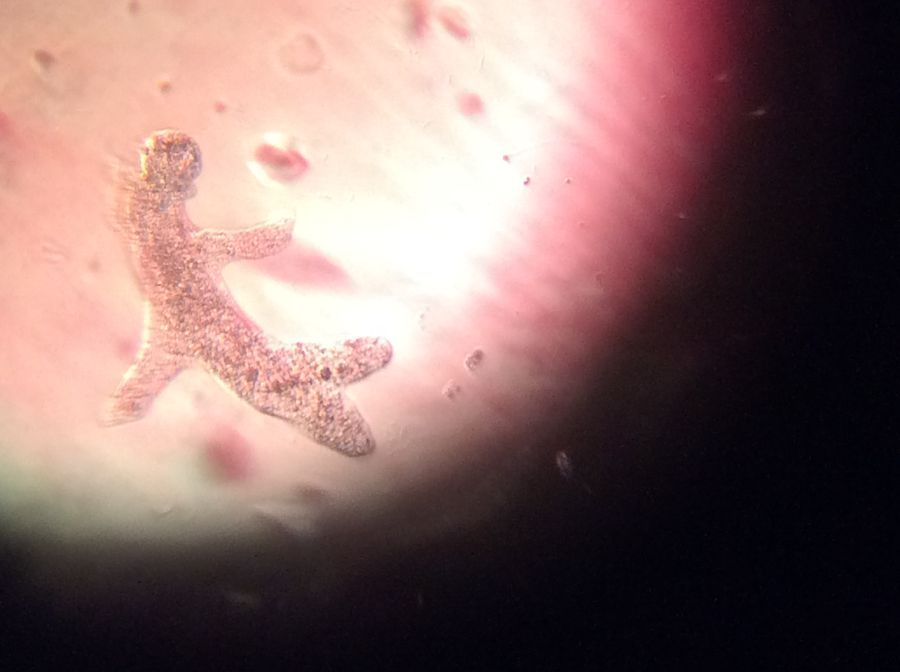An Adventurous Amoeba proteus setting sail towards its prey
 Oct 06, 2019 • 8:54 PM UTC
Oct 06, 2019 • 8:54 PM UTC Unknown Location
Unknown Location 140x Magnification
140x Magnification Microorganisms
Microorganisms
agana
Learn about the author...
1posts
3comments
1locations

It all began with my 9th grade biology school project on Amoeba when I sat and thought, “wouldn’t it be nice to actually see this Protist to its finest detail?” My adventure commenced here and this simple 9th grade biology project became much more than an enhancement of knowledge. It became an interaction with the hidden mysteries in this world.

Amoeba proteus in a cyst in response to its lack of sufficient materials in its surroundings

Amoeba proteu s extending its pseudopodia (false feet) in search for its prey Introduction – What is the Amoeba? Amoebas move using a primitive form of locomotion using their pseudopodia (false feet). The pseudopodia are formed as a result of cytoplasmic extension. With the Amoeba’s absence of mouth, it uses its pseudopodia to follow prey. Its cytoplasm extends and engulfs surrounding food particles which are then digested by enzymes.
Amoeba proteus in Action – What did I see? Under the spectacular foldscope microscope I observed an Amoeba proteus engulfing Chilomonas (its prey) using its extended pseudopodia. I also observed this unicellular organism’s form of locomotion and constant shape changing as it extended its pseudopodia to follow its prey, which were in fact rushing around it. There was a time when the Amoeba proteus was engulfing two Chilomonas simultaneously with separate pseudopodia extensions. I could vividly see the Amoeba’s protoplasmic streaming – the movement of fluid within an animal or a plant. Among the organelles within this protoplasm were contractile vacuoles which played a role in excreting excess waste after the Amoeba’s digestion.
Take A Close Look at the Video that I Took of the Amoeba proteus in Order to Visualize my Observations
Amoeba proteus in Action – What did I see? Under the spectacular foldscope microscope I observed an Amoeba proteus engulfing Chilomonas (its prey) using its extended pseudopodia. I also observed this unicellular organism’s form of locomotion and constant shape changing as it extended its pseudopodia to follow its prey, which were in fact rushing around it. There was a time when the Amoeba proteus was engulfing two Chilomonas simultaneously with separate pseudopodia extensions. I could vividly see the Amoeba’s protoplasmic streaming – the movement of fluid within an animal or a plant. Among the organelles within this protoplasm were contractile vacuoles which played a role in excreting excess waste after the Amoeba’s digestion.
Take A Close Look at the Video that I Took of the Amoeba proteus in Order to Visualize my Observations
Above is a representation of Amoeba proteus moving using its pseudopods and its protoplasmic flow. In its protoplasm, contractile vacuoles are seen. This amazing creature has no definite shape and is in constant motion. Above, the nature of how it moves is illustrated.
Above, Amoeba proteus holds onto its prey, which is trying to escape, after englufing it with its pseudopods
Above Amoeba proteus is in the process of engulfing its prey. It takes its pseudopods and circles the prey. Here, the Amoeba is consuming two organisms at once. The second organism is engulfed in the top right.
Above Amoeba proteus is changing shape after consuming its prey and is digesting the food with its contractile vacuole. ACKNOWLEDGEMENTS:
Thank you Dr. Lakshmin for introducing me to the fascinating world of the Foldscope
Thank you Dr. Lakshmin for introducing me to the fascinating world of the Foldscope
Sign in to commentNobody has commented yet... Share your thoughts with the author and start the discussion!
More Posts from agana
No more posts from this author.